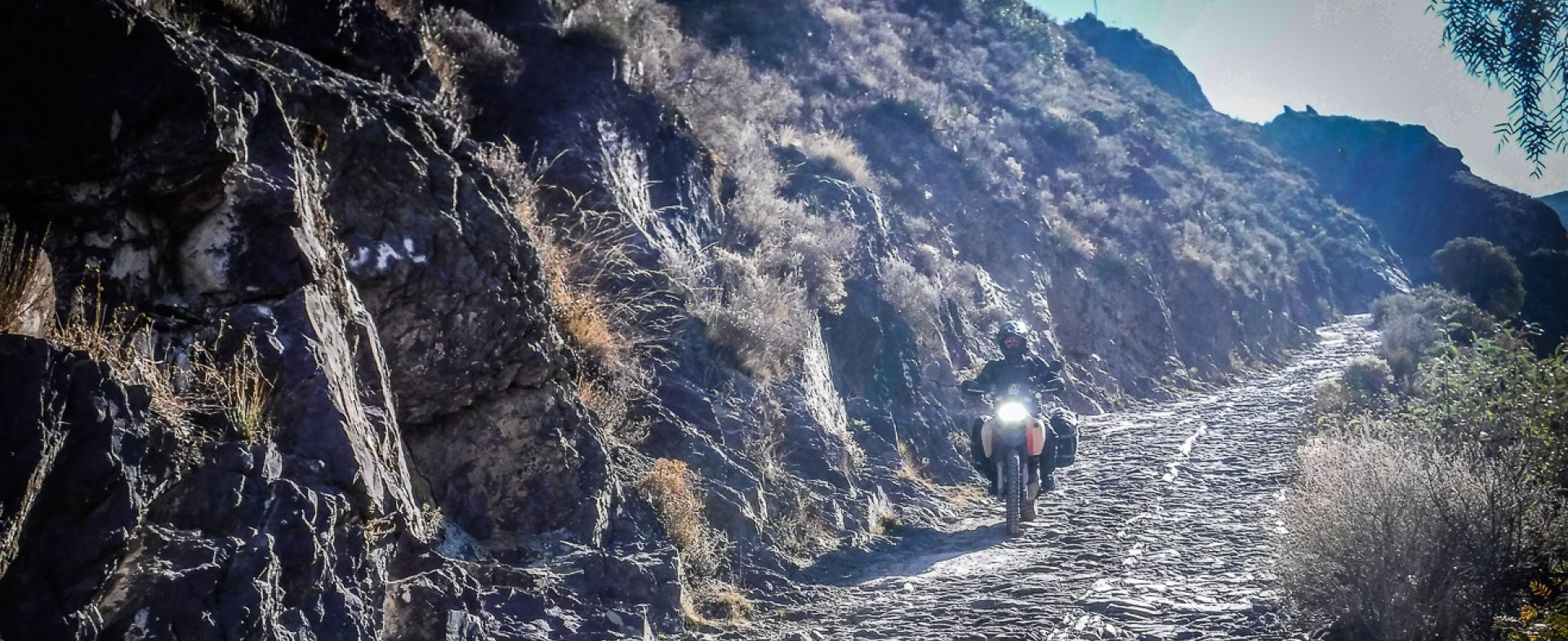Small winding roads only a stone's throw away from your own front door with the potential to make you dizzy.
Hunsrück: The best is often closer than one thinks.
Motorcycle Diaries
The recipe for happiness: a weekend of leisure, a few fill-ups of fuel and your motorcycle with the most essential luggage. The goal?
Special about the strange times we’re living in is certainly that you have more attention for the small and local things. There is hardly any other way. Our travel radius has shrunken within a very short period of time and even now, even with many borders passable, it is questionable whether longer or even long trips make sense.
To escape the lockdown blues I spread out the map of my close neighbourhood and started to merge the smallest and most winding roads into a ride that – on paper – promised to present something special.
The ride leads the Hunsrück, a small, sparsely populated low mountain range in western Germany flanked by the rivers Rhine and Moselle. These vineyards on steep river slopes – the perfect symbiosis of man and machine - are supposed to provide a two-day rush.
The ride starts at banks of the river Rhine. The perfect spot to warm up the tires. The Middle Rhine Valley is an UNESCO World Heritage Site and is home to the highest density of medieval castles, palaces and fortresses. There is an old wall on every hill between Koblenz and Bingen.
From Boppard the route climbs up. The Hunsrück is calling and the world is getting sideways. There are hardly any straights left on the partly single-lane roads. Curves are speeding towards me, the brake points are in place, fields and woods disappear as green smears on the edge of the visor.
The sky opens up. What a vastness! The bends get wide, the country road is perfectly paved and leads to the horizon. Low hanging clouds travel quickly over the landscape, giving the summer sky a beautiful contour; they chase shadows over the ripe fields. What a day to ride a motorcycle.
On the Moselle, the Hunsrück and Eifel shake hands and impressive river loops alternate with fast mountain sections. From above the river looks like the southern side of the Swiss Maloja Pass and winds its way in tight loops between the low mountain ranges.
The Hills around the villages are almost completely covered with vineyards, which are typical for the region.
The juice of the vines not only holds together the souls of wine lovers around the globe, but also sustainably lubricates the tourist engine. This is a matter of superlatives, because the world's largest continuous Riesling cultivation area stretches along the Moselle slopes, and at the same time the region is the largest steep-slope cultivation area in the world. The vines, which thrive on slate and shell limestone, stretch out towards the sun on slopes that are up to 65 degrees steep. The predominantly white wine is in demand, guests come from near and far.
The next mountain stage is calling me.
I shift down twice and shoot up the Hunsrück again. The area here is sparsely populated and an El Dorado for all those whose flow of traffic should remain undisturbed by town signs. A wonderful contrast to the frequented river valleys. Poppies and sunflowers grow in the fields and as the engine silences for a moment I listen to the midsummer insect concert.
In Mörsdorf it is worth to leave the motorbike and walk to the 360 meter long Gaierlay hanging rope bridge. Not without reason this impressive construction is a rather popular Instagram motive.
The road layout around Cochem and Treis-Karden is unique. Here again, curve after curve is lined up and the views over the river valley are often breath-taking. The partly single-lane roads literally stick to the slopes and exposed serpentines let you look deep down, almost like in the high mountains. From here, detours to the Eifel are also tempting, but that is actually a completely different story.
The route leads back eastwards over tiny asphalt strips, crossing a main road here and there or passing through a village.
From the mountain ranges above the Rhine you can get a glimpse of the place from which a beguilingly singing woman is said to have been the fate of many a skipper. She was called Loreley, the femme fatale of the Middle Rhine. According to the legend, the breath-taking blonde sat on the rock named after her, coiffed her flowing hair with a golden comb and sang so sweetly that it almost turned the heads of the boatmen on the Rhine. Visually and acoustically captivated in this way, they steered their barges one after the other onto the treacherous rocks and sank with man and mouse into the waters.
It is probably an irony of fate that in 2003 of all years a passenger ship of the same name ran aground in front of the cliff.
The area is not embarrassed by such stories and there are curious myths almost as many as there are curves.
In Sankt Goar I cross the Rhine by ferry in the shadow of the Rheinfels Castle. Boats are the only way between Koblenz and Wiesbaden to reach the other bank of the river with dry feet. There are no bridges on the almost 100 kilometres. Seagulls screech in the evening light and there is an almost maritime atmosphere.
The weekend is coming to an end and the trip counter of my Honda is almost 500 kilometres richer. It's amazing what you can experience on a weekend almost on your own doorstep.
The roadbook of this trip you can find here: https://motorcycle-diaries.com/en/trips/md-hunsruck-loop
#FORYOURRIDINGPLEASUREONLY

























